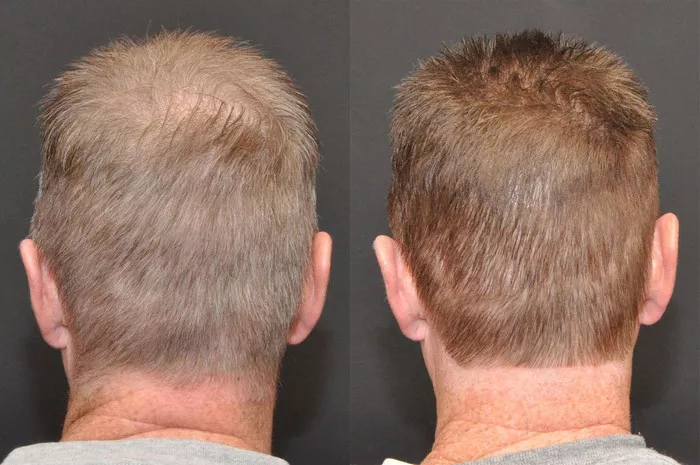The journey to hair restoration often involves a multifaceted approach, with individuals exploring various options to achieve optimal results. One intriguing combination gaining attention is the synergy between hair transplants and the topical medication Minoxidil. In this article, we delve into the question: Can Minoxidil speed up your hair transplant results?
1. Understanding Minoxidil: A Topical Game-Changer
Minoxidil, a vasodilator originally developed as an oral medication for hypertension, gained fame for its unexpected side effect – promoting hair growth. When applied topically, Minoxidil has been proven effective in stimulating hair follicles, increasing blood flow to the scalp, and prolonging the hair growth cycle. This makes it a valuable tool in the fight against hair loss.
2. Hair Transplants and Minoxidil: A Dynamic Duo
While hair transplants involve the surgical relocation of hair follicles, Minoxidil operates on a different front, addressing the underlying causes of hair loss. Combining these two approaches can create a powerful synergy, potentially enhancing the overall effectiveness of the hair transplant process.
3. Early Post-Transplant Phase: Accelerating Healing and Growth
In the early post-transplant phase, the scalp requires time to heal and for transplanted follicles to establish themselves. This is where Minoxidil can play a crucial role. Applying Minoxidil to the scalp during this period may stimulate blood flow, promoting quicker healing and encouraging the transplanted follicles to transition into the growth phase sooner.
4. Promoting Blood Flow and Oxygenation
Minoxidil’s vasodilatory effects contribute to increased blood flow to the scalp, ensuring that the transplanted hair follicles receive an ample supply of oxygen and nutrients. This enhanced circulation can potentially accelerate the healing process and encourage the transplanted hairs to thrive in their new environment.
5. Addressing Existing Hair and Preventing Further Loss
Minoxidil is not only beneficial for the newly transplanted hair but also for existing hair in the recipient area and surrounding regions. It can help strengthen and revitalize native hair, reducing the risk of further hair loss and creating a fuller, more robust appearance. This dual action addresses both the transplanted and existing hair, contributing to a more comprehensive and sustainable result.
6. Patient-Specific Considerations: A Tailored Approach
The decision to incorporate Minoxidil into the post-transplant care routine should be based on individual considerations. Factors such as the patient’s overall health, the extent of hair loss, and the specific characteristics of the transplanted hair follicles play a role in determining the most suitable course of action. Consulting with a qualified hair transplant specialist is crucial to tailor the approach to the unique needs of each patient.
7. Post-Transplant Maintenance: Ensuring Long-Term Success
Minoxidil can be a valuable addition to the long-term maintenance plan following a hair transplant. While the surgery itself addresses the physical relocation of hair follicles, maintaining a healthy scalp environment is essential for sustained results. Minoxidil’s role in fostering a conducive environment for hair growth aligns with the goal of preserving the transplanted hair and preventing further loss.
8. Minoxidil as a Non-Invasive Option
One significant advantage of incorporating Minoxidil into the post-transplant routine is its non-invasive nature. Unlike some other hair loss treatments, Minoxidil is applied topically and does not involve additional surgical procedures or systemic medications. This makes it an accessible and convenient option for individuals seeking to complement their hair transplant results without significant lifestyle changes.
9. Patient Compliance: A Crucial Factor
The success of any post-transplant regimen, including the use of Minoxidil, hinges on patient compliance. Consistent and proper application of Minoxidil as directed by the healthcare provider is vital to realizing the potential benefits. Establishing realistic expectations and understanding the commitment required for post-transplant care are essential components of a successful long-term strategy.
10. Potential Drawbacks and Considerations
While Minoxidil has shown promise in enhancing hair transplant results, it’s essential to be aware of potential drawbacks. Some individuals may experience mild side effects, such as scalp irritation or dryness. Conducting a patch test and consulting with a healthcare professional can help identify any adverse reactions early on.
See Also: How Facial Hair Transplant Works: Things You Need To Know
Conclusion: A Holistic Approach to Hair Restoration
In the pursuit of optimal hair restoration, the combination of Minoxidil and hair transplants offers a holistic and synergistic approach. By addressing both the surgical and medical aspects of hair loss, individuals may experience enhanced results in terms of quicker healing, improved hair growth, and long-term maintenance. Consulting with a qualified hair transplant specialist is paramount to developing a personalized plan that aligns with the unique needs and goals of each patient, ensuring a successful and satisfying hair restoration journey.


